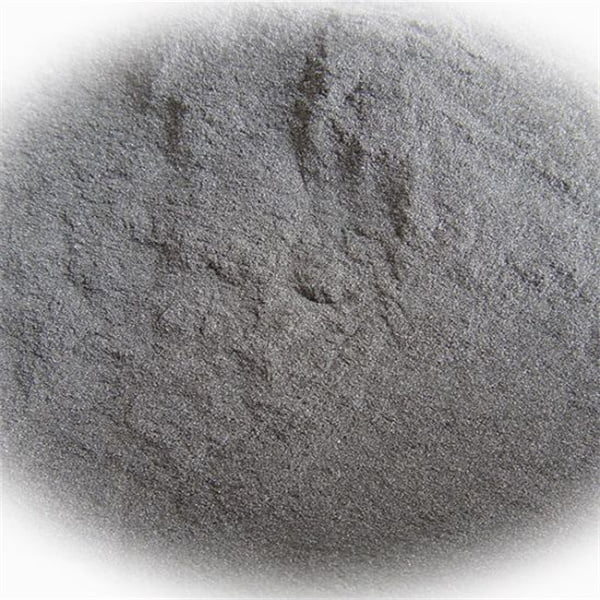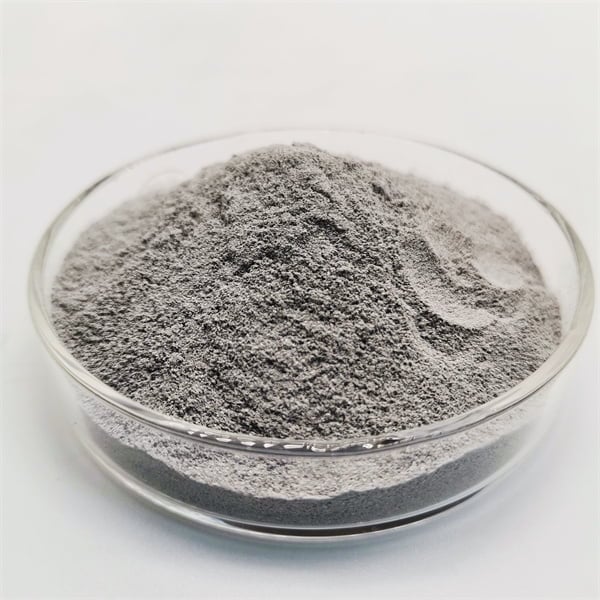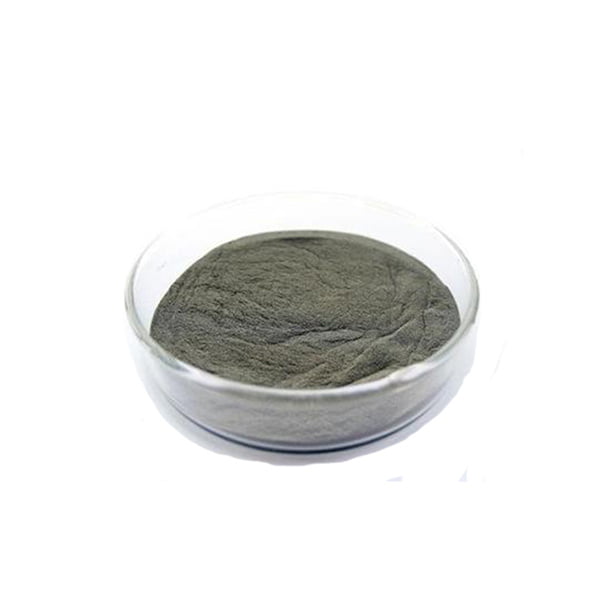proszki metali do druku 3D
Spis treści
Proszki metali are a critical raw material for additive manufacturing using powder bed fusion technology. This guide provides an overview of various metal powders used in 3D printing processes like selective laser melting (SLM) and electron beam melting (EBM).
Introduction to Metal Powders for AM
Metal powders enable printing of complex, high-performance metal parts using additive manufacturing.
Materials used:
- Stale nierdzewne
- Stale narzędziowe
- Stopy kobaltowo-chromowe
- Tytan i stopy tytanu
- Stopy aluminium
- Nadstopy niklu
- Stopy miedzi
Key powder properties:
- Chemistry – Purity and composition
- Kształt i morfologia cząstek
- Rozkład wielkości cząstek
- Gęstość pozorna i gęstość kranowa
- Płynność
- Ponowne użycie proszku
Powder production methods:
- Atomizacja gazu
- Rozpylanie wody
- Atomizacja plazmowa
- Topienie indukcyjne elektrod
- Proces karbonylowy
- Stopy mechaniczne

Proszki ze stali nierdzewnej
Stainless steel powders are commonly used for printing corrosion resistant parts:
Alloy types:
- Austenitic steels like 316L, 304L
- Martensitic steels like 17-4PH
- Duplex steels like 2205
- Precipitation hardening like 17-4PH, 15-5PH
Charakterystyka:
- Wysoka odporność na korozję i utlenianie
- Good strength and ductility
- Less prone to cracking than high-alloy steels
- Parameters like build atmosphere critical
Zastosowania:
- Chemical and process industry parts
- Komponenty morskie
- Medical implants and devices
- Food/pharma industry parts requiring hygiene
Dostawcy: Carpenter, Sandvik, Praxair, Höganäs, LPW Technology
Proszki stali narzędziowej
Tool steels like H13 are ideal for printing wear and high-hardness parts:
Alloy types:
- Shock-resistant steels like S7
- Cold work steels like D2
- Hot work steels like H13, H11
- High speed steels like M2
Charakterystyka:
- Excellent hardness up to 60 HRC
- Wysoka odporność na zużycie
- Good toughness and thermal fatigue resistance
- Require high-temperature solution annealing
Zastosowania:
- Metal forming dies and molds
- Narzędzia tnące i wiertła
- Wear parts and bearings
- High-temperature tooling
Dostawcy: Sandvik, Erasteel, LPW Technology, Tekna Plasma Systems
Stopy kobaltowo-chromowe
Cobalt-chrome powders print biocompatible implants and dental restorations:
Alloy types:
- CoCrMo like Co-28Cr-6Mo
- CoNiCrMo like Co-35Ni-20Cr-10Mo
- CoCr like Co-67Cr-28Fe
Charakterystyka:
- Doskonała biokompatybilność i odporność na korozję
- Wysoka wytrzymałość i twardość
- Wear resistance for articulating joints
- Challenging printability and cracking tendency
Zastosowania:
- Dental copings, bridges and crowns
- Orthopedic knee and hip implants
- Fixation devices like cranial plates
- Spinal fusion hardware
Dostawcy: SLM Solutions, Carpenter, Arcam EBM
Proszki tytanowe
Titanium powders create strong, lightweight printed parts:
Alloy types:
- Unalloyed titanium like Ti Grade 1-4
- Stop Ti-6Al-4V
- Ti-6Al-7Nb alloy
- Other alpha + beta alloys
Charakterystyka:
- Wysoki stosunek wytrzymałości do wagi
- Doskonała odporność na korozję
- Dobre właściwości wysokotemperaturowe
- Low density – 4.5 g/cc
- Reactive and requires inert atmosphere
Zastosowania:
- Aerospace and motorsports components
- Implanty medyczne i protetyka
- Food/chemical industry parts
- Części samochodowe
Dostawcy: AP&C, Tekna, Carpenter Additive

Stopy aluminium
Aluminum powders print lightweight structural or functional parts:
Alloy types:
- AlSi10Mg
- AlSi7Mg
- AlSi12
- Scalmalloy® and other Al alloys
Charakterystyka:
- Low density – 2.7 g/cc
- Good strength and stiffness
- Doskonała przewodność cieplna
- Prone to cracking and residual stresses
Zastosowania:
- Automotive and motorsports components
- Aerospace and space applications
- Wymienniki ciepła
- Medical equipment like casts
Dostawcy: AP&C, Sandvik, LPW Technology, ECKA Granules
Nadstopy niklu
Nickel superalloys like Inconel 718 print high-temperature parts:
Alloy types:
- Inconel 718
- Inconel 625
- Waspaloy
- Hastelloy X
Charakterystyka:
- Doskonała wytrzymałość w wysokich temperaturach
- Good corrosion and creep resistance
- Ability to work under stress at high temps
- Challenging to process and prone to cracking
Zastosowania:
- Łopatki turbiny
- Części komory spalania
- Elementy statku kosmicznego
- Nuclear/chemical industry parts
Dostawcy: Praxair, Carpenter Additive, GE Additive
Stopy miedzi
Copper alloys like CuCrZr print highly conductive parts:
Alloy types:
- Copper-chromium like CuCr1Zr
- Copper-nickel like CuNi2SiCr
- Bronzes like CuSn10
Charakterystyka:
- Doskonała przewodność cieplna i elektryczna
- Dobra odporność na korozję
- Antibacterial property
- Lower strengths than steels and Ni alloys
Zastosowania:
- Electrical components like busbars
- Heat exchangers and heat sinks
- Waveguides and RF components
- Medical instruments and fixations
Dostawcy: Sandvik, LPW Technology, Metalysis
Specyfikacja techniczna
Typical metal powder specifications used in AM:
| Parametr | Typowe wartości | Test Standards |
|---|---|---|
| Wielkość cząstek | 10 - 45 μm | ASTM B214 |
| Kształt cząsteczki | Kulisty | ISO 13322-2 |
| Natężenie przepływu | 25 - 35 s/50g | ASTM B213 |
| Gęstość pozorna | 2 - 5 g/cc | ASTM B212 |
| Gęstość kranu | 4 - 8 g/cc | ASTM B527 |
| Tlen resztkowy | < 300 ppm | In-house method |
| Azot resztkowy | < 50 ppm | In-house method |
| Węgiel resztkowy | < 30 ppm | ASTM E1019 |
Metody produkcji proszków
1. Atomizacja gazu
- Wysoce sferyczny proszek
- Small particle sizes of 5-100 μm
- Used for reactive alloys like titanium
2. Atomizacja wody
- Irregular powder shape
- Larger particles up to 300 μm
- Lower cost process
3. Atomizacja plazmowa
- Controlled particle shapes
- Submicron to 150 μm sizes
- High purity powder
4. Mechanical Alloying
- Elemental blending and milling
- Cost-effective for custom alloys
- Large particle sizes
Dostawcy i ceny
| Dostawca | Materiały | Zakres cen |
|---|---|---|
| Technologia LPW | Stale narzędziowe, stale nierdzewne | $50 - $120/kg |
| AP&C | Titanium alloys, Al alloys | $70 – $450/kg |
| Sandvik | Stainless steels, Ni alloys | $45 – $250/kg |
| Praxair | Superalloys, titanium | $150 – $600/kg |
| Carpenter Additive | Tool steels, CoCr, stainless | $80 - $300/kg |
- Stainless steel powders cost $45-$120 per kg
- Titanium alloy powders cost $150-$450 per kg
- Superalloys and tool steels cost $250-$600 per kg
Prices depend on alloy, quality, lot size, and purchase agreements.
Powder Handling and Storage
To prevent contamination, proper powder handling is critical:
- Use dedicated powder sieving areas
- Ensure inert atmosphere gloveboxes and hoppers
- Use conductive containers to dissipate static charges
- Ground all equipment and transport containers
- Avoid contact with oil, water, or oxygen
- Store powder in sealed containers under inert gas
- Control temperature and humidity during storage
- Follow safety precautions like PPE when handling
Proper storage extends powder reuse life.
Przesiewanie proszków
Sieving ensures consistent particle sizes:
Korzyści:
- Removes satellite particles that cause defects
- Rozbija aglomeraty
- Improves flow and packing density
- Reduces recyclability issues
- Removes foreign contaminants
Procedure:
- Sieve powder using mesh sizes around 20-63 μm
- Sieve using rotational or vibratory sieving
- Perform sieving under inert atmosphere
- Dokumentuj pozostałą procentową masę proszku
Sieving improves part quality by ensuring ideal powder spreadability.
Installation and Commissioning
Installing a metal AM printer with powder system involves:
- Cleaning equipment surfaces to avoid contamination
- Leak testing inert gas connections
- Checking laser or electron beam power
- Loading and testing powder recoating system
- Integrating chiller, exhaust, and service connections
- Installing monitoring and safety sensors
- Verifying powder sieving and handling systems
- Calibrating build plate levelling
- Test printing sample parts and validating quality
Vendors provide installation and commissioning support.
Operation and Best Practices
Printer operation guidelines:
- Perform regular leak checks and inert gas purity tests
- Precondition powder to ensure consistent texture
- Adjust layer thickness and laser parameters for new materials
- Closely monitor the melt pool and control part temperature
- Validate critical dimensions using test prints
- Monitor powder condition and reuse only within recommendations
- Perform regular maintenance on optics, beam delivery system and powder recoating mechanism
Bezpieczeństwo personelu:
- Use appropriate PPE such as respirators and gloves
- Avoid contact with reactive fine metal powders
- Handle waste powder properly under inert atmosphere
Część przetwarzania końcowego:
- Use appropriate solution heat-treatment and ageing temperatures tailored to alloy and application
- Control ramp rates during thermal processing to relieve stresses
- Use hot isostatic pressing for complex parts if needed to improve densities
- Apply finishing steps like CNC machining and polishing
Konserwacja i inspekcja
Regular maintenance activities:
Codziennie:
- Inspect optics like mirrors, lenses, windows for damage
- Clean the build chamber and powder handling system
- Check inert gas levels and recharge if needed
- Test the sieve mechanism and powder recoater
Co tydzień:
- Calibrate sensors and instrumentation
- Check fasteners, electrical terminals and grounding
- Lubricate and inspect moving parts like motors and drives
- Monitor filters for replacement
Miesięcznie:
- Leak test inert gas system using helium
- Inspect safety devices like fire detectors
- Check the CHP system health
Yearly:
- Schedule preventive maintenance with equipment vendor
- Calibrate laser power meter
- Replace filters and consumable items
Maintenance as per vendor guidelines is required to sustain part quality and equipment health.
Choosing the Right Metal Printing System
Factors to consider when selecting a metal AM machine:
1. Wymagania produkcyjne
- Type of components to be produced
- Material needed based on part properties
- Wymagania dotyczące wielkości produkcji
- Required accuracy and surface finish
2. Specyfikacja drukarki
- Supported materials and parameters
- Build size and speed
- Precision and repeatability
- Inert atmosphere management
- Automation features and controls
3. System obsługi proszków
- Integrated or standalone system
- Sieving, feeding, storage and reuse capabilities
- Containment for reactive materials like titanium
- Monitoring features to avoid contamination
4. Zgodność z normami
- Industry standards like ASTM F3301
- Certyfikaty jakości producenta
- Safety standards compliance
5. Poświadczenia dostawcy
- Proven track record in AM industry
- Local sales and technical support capabilities
- Maintenance contracts and services offered
- Operator training plans
- Overall cost of ownership
Thorough requirements analysis and comparisons of machine offerings using these criteria results in the selection of the ideal 3D metal printing system tailored to the production needs.
Pros and Cons of Metal AM
Zalety:
- High geometric complexity printed easily
- Shorter time to functional parts
- Reduced waste compared to subtractive processes
- Single setup production directly from CAD
- Lightweighting and part consolidation potential
- Performance improvements with engineered alloys
- Customization and mass customization capabilities
Wady:
- Wysokie koszty maszyn i materiałów
- Additional post-processing steps required
- Limited size based on build chamber
- Kontrola wad wewnętrznych może stanowić wyzwanie
- Material properties can vary versus wrought
- Surface finish limitations may require finishing
- Training and expertise requirements
Troubleshooting Common Metal AM Issues
| Wada | Możliwe przyczyny | Działania naprawcze |
|---|---|---|
| Porowatość | Improper process parameters | Optimize laser power, speed, hatch spacing |
| Powder contamination | Use fresh sieved powder, improve powder handling | |
| Insufficient overlap between scan tracks | Adjust beam focus size and overlap | |
| Pękanie | Excessive thermal stresses | Optimize preheating, control cooling rate with heaters |
| Material prone to cracking | Change orientation to reduce stresses | |
| Contamination from build atmosphere | Ensure high purity inert atmosphere | |
| Wypaczenie | Nierównomierne ogrzewanie lub chłodzenie | Optimize scan patterns and restrain part on build plate |
| Poor Surface Finish | Part temperature too low | Increase preheat temperature |
| Improper melt pool fluidity | Adjust power and other parameters | |
| Zanieczyszczony proszek | Use fresh powder and improve handling |

Najczęściej zadawane pytania
Q: What metal alloy powders can be used for AM?
A: Stainless steels, tool steels, titanium alloys, nickel superalloys, aluminum alloys, cobalt-chrome, and copper alloys are common.
Q: What is the typical range of powder particle sizes used?
A: For PBF-LB/M processes, 10-45 microns is common, with tighter distribution around 20-45 μm.
Q: How long can metal powders last?
A: With ideal argon storage, many alloys last 1-2 years. Reuse life is shorter – 20-100 prints based on alloy.
Q: What post-processing steps are required on metal AM parts?
A: Support removal, heat treatment, surface finishing like CNC machining, polishing and coating are often required.
Q: How are reactive metal powders like titanium and aluminum handled?
A: Specialized powder handling under inert argon atmosphere is needed to prevent oxygen pickup.
Q: What are common powder contamination risks?
A: Exposure to atmosphere leading to oxygen or nitrogen pickup. Metallic particles from machining or wear. Oil and moisture.
Q: What standards are used for qualifying metal powders?
A: ASTM B214, ASTM B812, ASTM F3049, ASTM F3301, and MPIF standards.
Q: Why is powder sieving important?
A: It breaks up agglomerates, removes satellites, and provides optimum and consistent powder size for high density and surface finish.
Wnioski
Metal powders enable additive manufacturing of advanced, high-performance components with properties better than wrought materials in some cases. A wide range of alloys from stainless steels to superalloys and titanium are available in powder form, tailored to demanding applications across aerospace, medical, automotive, and general industries. With continual improvements in alloys, quality standards, production processes, machinery, and part properties – metal AM is maturing into a core production technology globally. However, process and material expertise and rigorous quality control are essential to realize the full benefits. As more experience is gained, metal AM provides unprecedented capabilities to manufacture complex and customized parts with greater design freedom and shorter lead times.
Udostępnij
MET3DP Technology Co., LTD jest wiodącym dostawcą rozwiązań w zakresie produkcji addytywnej z siedzibą w Qingdao w Chinach. Nasza firma specjalizuje się w sprzęcie do druku 3D i wysokowydajnych proszkach metali do zastosowań przemysłowych.
Zapytaj o najlepszą cenę i spersonalizowane rozwiązanie dla Twojej firmy!
Powiązane artykuły

Wysokowydajne segmenty łopatek dysz: Rewolucja w wydajności turbin dzięki drukowi 3D w metalu
Czytaj więcej "
Drukowane w 3D mocowania dla samochodowych czujników radarowych: Precyzja i wydajność
Czytaj więcej "Informacje o Met3DP
Ostatnia aktualizacja
Nasz produkt
KONTAKT
Masz pytania? Wyślij nam wiadomość teraz! Po otrzymaniu wiadomości obsłużymy Twoją prośbę całym zespołem.

Proszki metali do druku 3D i produkcji addytywnej
PRODUKT
cONTACT INFO
- Miasto Qingdao, Shandong, Chiny
- [email protected]
- [email protected]
- +86 19116340731







